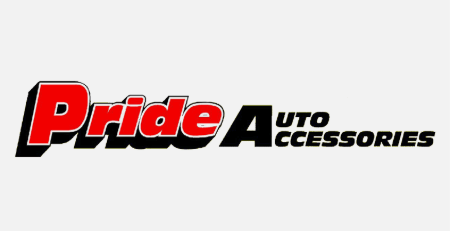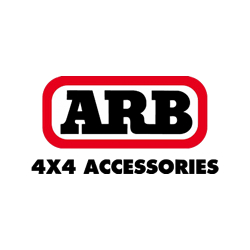Track Talk: How to be a good travelling companion.
When I joined the club in 1995 many of the active members had considerable experience travelling in the bush, by 4WD, motorbike or even on foot, and considerable camping experience even if new to 4WD’ing. I’ve noticed over recent years that many members do not have that background, and this can lead to problems on trips with members not understanding what is expected of them and inadvertently breaking the unwritten rules.
For some folks the transition from driver training where they receive intensive guidance, to real-world 4WD trips where they receive little if any guidance, can be a bit of a shock. Do not imagine that as a newcomer you are not welcome! The old hands fondly remember our early years and the terrors of tracks that now seem easy. On most trips newcomers will be made very welcome and find advice is readily available if asked for and acted upon. Please remember that a Grade 3 trip is not necessarily a trip for novices.
To help to fill in some of the gaps I now provide to all applicants for my trips a set of guidelines that lays out my expectations of the participants and some of what they should expect, and not expect, from me as a trip leader.
The following represents my own opinions and practices and is not a statement of club policy. I offer it here as guidance for members who are just starting to do trips with the club, and also for trip leaders (and potential trip leaders). Trips run more smoothly when all the people involved share an understanding of practices and expectations. Please feel free to adapt this for your own use. And if you feel the following is a bit too proscriptive, please remember that your club trip leaders are not paid to run trips; they do it for pleasure and for the good of the club, and they are the rarest and most valuable club resource.
The Unwritten Rules, or, Guidance for Travelers. (Standard pre-trip briefing.)
Could you please advise the trip leader of the names of the other people who will be travelling with you.
- All vehicles must be registered and with at least 3rd-party insurance.
- All vehicles must be in sound mechanical condition with up-to-date servicing. Please attend to known issues before the trip.
- No trailers. (or) Trailers OK . (Depending on the trip.)
- For grade three trips, basic driver training must have been completed.
- For grade three trips ALL-TERRAIN tyres with good tread are essential on all four wheel and spare. THIS IS VERY IMPORTANT. Mud-Terrain tyres are also acceptable.
- Rated front and rear recovery points are essential.
- Snatch strap and 2 rated shackles is essential. Other recovery gear is good if you have it.
- Fire extinguisher and first-aid kit are essential.
- Air compressor (for inflating tyres) and UHF radio are essential.
- Snow/mud tyre chains are worth carrying if you have them.
- A small tarp may be needed for river crossings and gathering firewood.
- A small bush-saw with a hardwood blade is very handy for firewood.
- A small shovel is essential for toilet duties.
- A mattock is the best tool if any road-building is needed.
- Extended diff and gearbox breather tubes are recommended.
- A cargo barrier is strongly recommended. Please ensure your gear is secured in case the ride gets rough!
- Road Service (eg NRMA) cover with premium options is strongly recommended.
Departure point and time: Meet at (place) for a (time) departure on (day and date). On the morning ring please me on nnn nnn nnnn if you are going to be late. This is the number one rule: please be punctual.
The planned route:
XXX.
Fuel: The longest leg between refueling stops is about XXX km including about XX% low range work. Remember to carry a reserve in case one of the expected stops is dry (this happened recently with no diesel available in Omeo!).
Vehicle preparation: This is important. If you are not a pretty handy mechanic yourself you should have your vehicle checked by a specialist 4WD mechanic annually, and preferably not too long before a serious trip. Batteries have caused problems for some members on recent trips. If your battery is more than 2 years old (or if you don’t know how old it is), please go to a battery specialist and ask them to load test the battery. It’s a quick, free test and will tell you if your battery is about to let you down. You should carry at least the following basic spares – do not expect others to be able to help you if you do not have spares! Radiator hoses and hose clamps. Heater hose (one metre) of the correct diameter and hose clamps. Auto-transmission cooler hose (one metre) and hose clamps. Fan belts – for water pump, power steering and air conditioning. Engine oil (one litre), power steering fluid (500ml), auto-transmission fluid or manual gearbox oil (one litre), brake fluid (500ml). Spare fuel filter. Spare engine oil filter. Basic tool-kit with spanner set and sockets. Tyre repair kit with plugs, spare valve stems, valves and caps. Workshop manual. Fire extinguisher. Electrical fuses. Jumper cables. Spare solenoid for your winch. Even if you have no mechanical skills yourself, these items will enable other members to help you.
Check how your battery earth terminal is attached, and keep the necessary tool handy in your door pocket. On two occasions we have had to disconnect batteries to prevent or stop a vehicle fire, and scrambling for the right tool might take too long. Consider having a quick-disconnect isolating terminal fitted for your battery earth terminal.
Daily Vehicle Check: Either morning or evening – check for tyre damage, tyre pressure, wheel nuts tight, oils and coolant levels, washer bottle, radio, battery secure and terminals tight, roof rack fittings.
Maps and Navigation: We use OziExplorer to help navigating, and I can share my waypoint and route files on request. Even if you are not an OziExplorer user I encourage you to keep track of our progress to build your skills. You’ll need the following maps: xxx.
Start times: Our standard daily start time aims for a 9:00am departure from the campsite. For most of us that means rising at 7:00am. Please allow yourself enough time for breakfast and packing. If an earlier departure will be required I’ll advise you the night before.
Toilets: There are pit toilets at each of the campsites excepting xxx where we will need to dig our own. If anyone has a toilet-tent and/or thunder-box could they please bring it and let me know? At casual stops all toilet waste must be buried with your small shovel.
Expectations: Your trip leader has a particular route planned that takes into account available campsites, daily distance, track difficulty and points of interest. If possible your trip leader will have run a reconnaissance trip. Unforeseen difficulties can cause delays and the need to re-route. When the going gets tough, please be patient and help others.
Please be flexible with your expectations about the trip. Conditions can change, or the trip leader may find that some members of the party do not have the skills, experience or vehicle capability to tackle some tracks, and the planned route may need to be changed. Your trip leader is doing their best to keep everyone safe and happy. If the trip doesn’t meet your expectations please consider leading a trip yourself.
Your trip leader is not a 4WD instructor, and will not provide instruction or advice unless requested. If you need advice at any point please ask. Your trip leader will otherwise assume that you are confident driving your vehicle.
Unless specifically listed as such, this trip is not designed specifically for novices. If you are a novice please discuss your participation with the trip leader before booking.
Problems on the road can cause delays, and a late return to home. I normally like to arrive home by about 6:00pm, but can never guarantee that. Please don’t make commitments to arrive home at a particular time on the last day.
Bad weather especially rain can make it necessary to change plans and stay off steep tracks in the high country and elsewhere.
Chainsaws: Depending on the trip your trip leader will probably carry a chainsaw for clearing fallen timber from the track. In many areas the use of chainsaws for cutting firewood is discouraged or banned.
Camp fires: I’m not sure if anyone is bringing their children along, but we welcome kids and usually enjoy their company. However I must insist that parents do not allow their children to play with the campfire especially by poking sticks into the fire and waving burning sticks around. The safety of all members is paramount. With our bushfire record in this area we must never encourage kids to think of fire as a plaything.
We will usually need to collect some firewood along the way for the evening campfire. Please bring your small tarp (can also serve for a radiator blind for river crossings) with some rope or straps to secure it, to carry a bit of wood to the campsite. A small bush-saw with a hardwood blade will be needed for cutting firewood. Especially in the mountains the best firewood is dry (standing) timber no more than 100mm in diameter. In Victoria all firewood must be cut into lengths no longer than one metre. If you are planning an elaborate meal that requires a lot of space at the fire you should make special provision for that. When we get to the campsite, don’t dump the firewood right beside the fireplace – put it about 5 metres away to leave room for our chairs.
The common camp fire is a place for socializing and warming up as well as preparing food. The fire is not a place to dispose of your rubbish, especially plastics, and never glass! Please bag your rubbish and dispose of it when we pass through a town.
If we are camping in Victoria the following rules apply:
Fires not to be lit on days of Total Fire Ban;
The fire is lit in a properly constructed fireplace or in a trench at least 30cms deep;
The area within a distance of three metres from the outer perimeter of the fire is clear of all flammable material;
The fire does not occupy an area in excess of one square metre and the size and dimensions of solid fuel used are the minimum necessary for the purpose;
A person is in attendance at all times while the fire is alight and has the capacity and the means to extinguish the fire; and
The fire is completely extinguished before the person leaves. This should be done with water, not soil, as fires can still smolder under soil. If a fire is cool to touch, it is safe to leave.
(From http://www.depi.vic.gov.au/about-us/media-centre/media-releases/compliance-operation-reiterates-campfire-safety)
If we are camping at one of the mountain huts please remember that it is traditional to leave dry wood and kindling in the hut for the next party in case they arrive in wet conditions.
The person who lights the fire is responsible for extinguishing the fire before retiring to bed. If that’s not you, please don’t stoke the fire up with quantities of wood late in the evening.
If there is a total fire ban we will not be able to light a cooking fire, so bring an enclosed gas stove or some cold food!
Convoy procedure is to be followed at all times on the road. My usual version of this is to stop for the following vehicle wherever there is a deviation from the obvious main track. It isn’t necessary to stop at every intersection if we are continuing on the good main track.
Pace and keeping up: Your trip leader will travel at a moderate pace for the conditions, based on long experience. In general terms it is expected that all trip participants should be able to maintain a similar pace, which will allow the convoy to progress at a satisfactory rate. Don’t drive so close to the vehicle in front that you are in their dust cloud, or not leaving a safe distance between you another vehicle on climbs and descents. On steep climbs and descents wait for the vehicle in front to call you through, and remember to call through the following vehicle. Do try to travel at a similar pace, and expect to catch up with their dust occasionally or get a glimpse of them in open terrain. If you find you are consistently falling well behind the vehicle in front of you please talk to the trip leader about the best position for you in the convoy.
Radio procedure: We normally use UHF channel 14, but may need to use another channel if we have interference from other groups. If anyone is using a hand-held UHF as their main radio please let me know. On the track, don’t panic if you can’t hear every transmission from the trip leader clearly. If it’s important the trip leader will ask the members to relay the message back through the convoy. Your trip leader will not provide a running commentary on track conditions, and I ask that participants also observe that practice. An exception to this rule is made for dangerous or potentially damaging conditions or situations.
River Crossings: A small tarp about 2m x 2m is needed to cover the front of the vehicle if the water is deep. Straps or ropes are also needed to tie it in place. It’s purpose is to stop water rushing in through the radiator, possibly bending the fan into the radiator or drowning the motor. Practice before the trip! A snorkel is good if the tubing is actually well sealed. Differential, gearbox and transfer case breathers should be extended with tubing to raise the intake to a high point, to keep the water out. Please advise the trip leader if you have no experience with river crossings.
Tail-end Charlie: The trip leader will normally appoint an experienced member with a good radio as tail-end Charlie. Charlie’s job is to acknowledge and echo every radio transmission from the trip leader, and to advise their progress past key points such as intersections. This helps the trip leader to learn if the convoy is getting too spread out.
Health issues: To help with our contingency planning, please advise your trip leader if you or any member of your party has health issues that could be a particular problem in remote areas. Please ensure you are carrying a reserve of essential medicines.
Photos and Videos: I love photography and take a lot of photos, and I encourage you to also make photos as we visit some wonderful places. However we should also remember that many people don’t like to be photographed and don’t like to have their image posted on social media websites. Please check with the person before doing so. The same applies to videos, with the added issue of recorded sound. If you are running a GoPro or similar video camera inside your vehicle, please inform other members when you are recording, as a courtesy, so we can be careful with our language! (This is not about rights – it’s about courtesy.)
Trip Reports: Club tradition requires a written trip report for the magazine and a brief verbal report for the next monthly club meeting. Please acknowledge your trip leader’s effort in organizing the trip by being willing to assist with trip reports. Written reports can be shared amongst several people.
And finally: Remember that rules are for the guidance of wise men and the blind obedience of fools. Use common sense at all times.
I think that’s about it. If you have any questions please ask. We’re looking forward to sharing an enjoyable trip with you. Cheers!
Chris Nicholls










